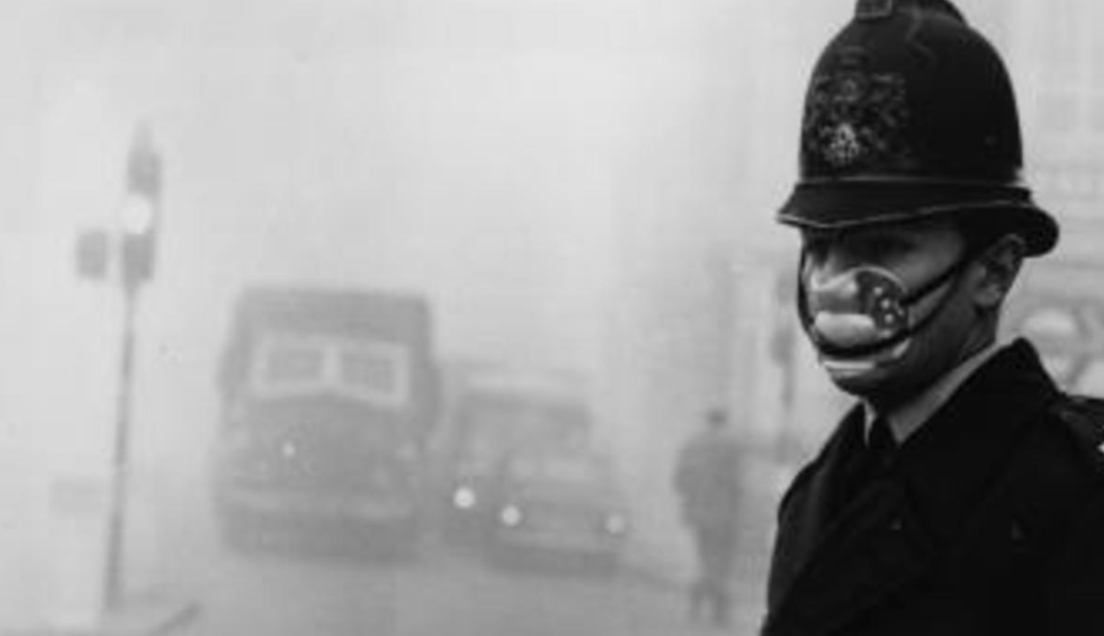ATI is when the temperature at ground level is lower than in the upper layers, which creates a cap that prevents the dispersion of urban pollutants in the atmosphere. From the beginning of the industrial era, it was responsible for the notorious London fogs. It was also found to be behind the highly polluted Wuhan smogs. (2)
In January of this year, Lombardy, Piedmont and Veneto were affected by an ATI that led the Italian government to impose strong measures to restrict the circulation of diesel vehicles, ban the burning of domestic fuels and force people to turn down their central heating. In Milan, the fog was so thick and the air so polluted that the fact you could no longer see the Madonnina on the Duomo’s southern façade made national news. In January, pollution levels in the region exceeded 50 micrograms of PM10 and PM2.5 per cubic metre, a situation further aggravated by a strike of the region’s rail workers.
PM10 and PM2.5 are inhalable particles with a diameter of less than 10 µm, known as micro-particles. Among the various air pollutants, they are the ones that cause the greatest health risk because they penetrate deep into the lungs and reach the alveoli, causing not only serious disorders in the respiratory tract but also in other organs, as they infiltrate the bloodstream. The main causes of their formation in the atmosphere are the so-called gas precursors, such as sulphur dioxide and nitrogen oxides. The latter, also known by their acronym, NOx, are produced by the poorly filtered burning of diesel. Their effects on public health are well known: respiratory diseases, diabetes, asthma, coronary and neurological diseases. In 2015, at least 38,000 people died from NOx inhalation. (3) Overall, micro-particles are responsible, or co-responsible, for the deaths of at least 15,000 people in Europe every year.
When an ATI, which prevents the atmospheric dispersion of PM10 and PM2.5, occurs simultaneously with a viral outbreak to which the human body has no immunity, its effects are devastating, especially for those suffering from any of the diseases listed above.
Without wishing to minimise the risks of the Covid19 pandemic, I would nevertheless question the appropriateness of the “war” metaphor that permeates political leaders’ speeches and is duly propagated by the media. It is absurd to declare “war” on a virus, and to call it an “invisible enemy”. It is understandable to praise the heroism of health care workers but preposterous to compare them to soldiers on a bloody battlefront and to promise total victory “whatever it takes”. The analogy has a goal, of course: that of demanding blind obedience under emergency laws by peddling a holy national communion between the people and their protector governments.
I doubt that the metaphor makes sense if we genuinely want to understand what is really at stake, both socially and in medical terms. But let us momentarily suspend disbelief and accept it as a portrait of reality. If we are indeed at war, we must hence clearly define our strategic goal, identify our enemy and select the best means to combat it effectively. So I would ask: has anyone ever posited that there may be more than one enemy and that we are trying to fight a virus without recognising that diesel combustion is perhaps the more insidious enemy? We could, for instance, start by trying to understand why a total of 24,981 Italians died of “flu” in the winter of 2016-17, when there was no Covid19 around.
References:
1) M. Bell et al., “A retrospective assessment of mortality from the London smog episode of 1952: the role of influenza and pollution”. Environmental Health Perspectives, 112, 1: 6-8
2) B. Liu et al., “Study of continuous air pollution in winter over Wuhan based on ground-based and satellite observations”. Atmospheric Pollution Research, 9: 156-165.
3) S. Anenberg et al., “The global burden of transportation tailpipe emissions on air pollution- related mortality in 2010 and 2015”. Environmental Research Letters. 14 (9): 1-12.
4) A. Rosano et al., “Investigating the impact of influenza on excess mortality in all ages in Italy during recent seasons (2013/14–2016/17 seasons)”. International Journal of Infectious Diseases, 88: 127–134.
Publicat a L'Accent, 4 Abril 2020
Published in TruePublica, 2 April 2020
Publié à MediaPart, 27 Mars 2020
Publicado no Público, 23 Março 2020

 RSS Feed
RSS Feed
